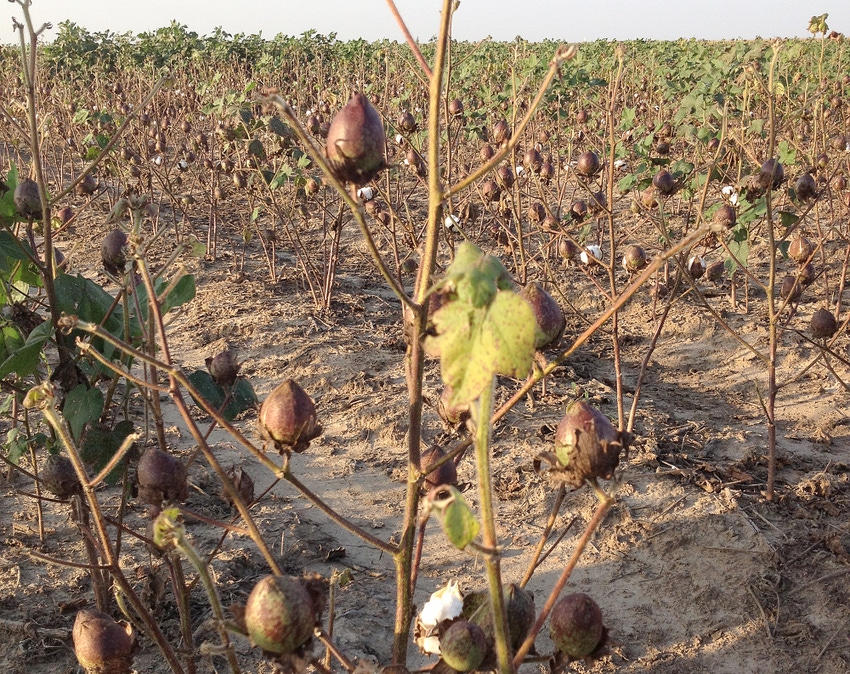
Alternaria leaf blight has been observed in no fewer than a dozen cotton fields in northeast Louisiana, and damage appears to be greatest in fields with low potash levels, says Roger Carter, consultant with Agricultural Management Services in Clayton, La.
“We are applying Twinline to manage leaf loss. It cost about $17 per acre, but it will be worth it if it prevents premature defoliation.”
Cercospora leaf spot is also beginning to appear more often, but doesn’t appear to be affecting the younger leaves like the Alternaria is doing, he said.
“We can stand some loss of bottom leaves, but we cannot accept much leaf loss in the top canopy.
Feature: Rotation, fertility and timeliness are keys to profits for Hank Rabb
“Alternaria is worse where potash levels are lower than optimum for cotton. If anything, the Alternaria should make farmers more willing to spend the money they should have been investing in fertilizer all along.”
One issue, Carter says, is single year leases, where farmers may not make the necessary fertility applications.
“Why invest the money if they will not be farming on that farm the next year?”
A possible solution, he says, would be for a farmer who makes a soil-building application of potash or lime to be reimbursed 20 percent of the cost of the fertilizer for each year less than five years that the farmer does not get to farm the fertilized property.
“In other words if he spent $100 per acre for a soil-building application of P and K and was not given the opportunity to farm that land but one year, the farmer would receive $80 per acre back from the landowner; two years, he would get $60 per acre returned, etc. It’s a win-win situation for the farmer and for the landowner.
“The amount of potash needed to correct the deficiency in some of these fields could be as high as 200 pounds of muriate per acre, a sizeable investment. And, then there is the annual soil maintenance applications afterwards.
“With the prices of all fertilizers through the roof, these expensive inputs need to be protected,” Carter said.
About the Author(s)
You May Also Like




